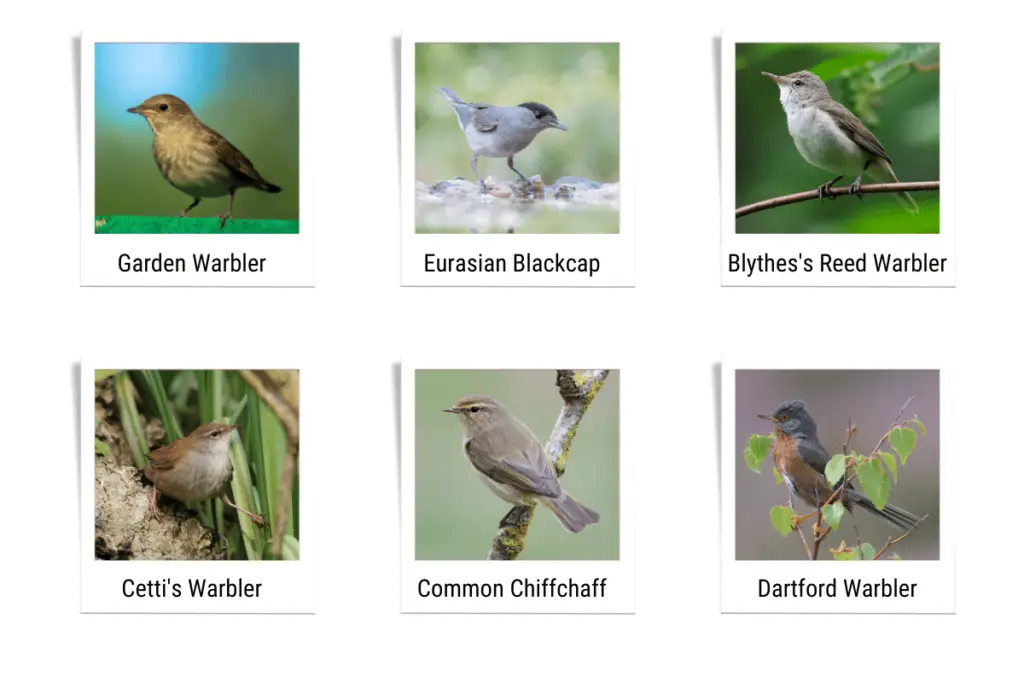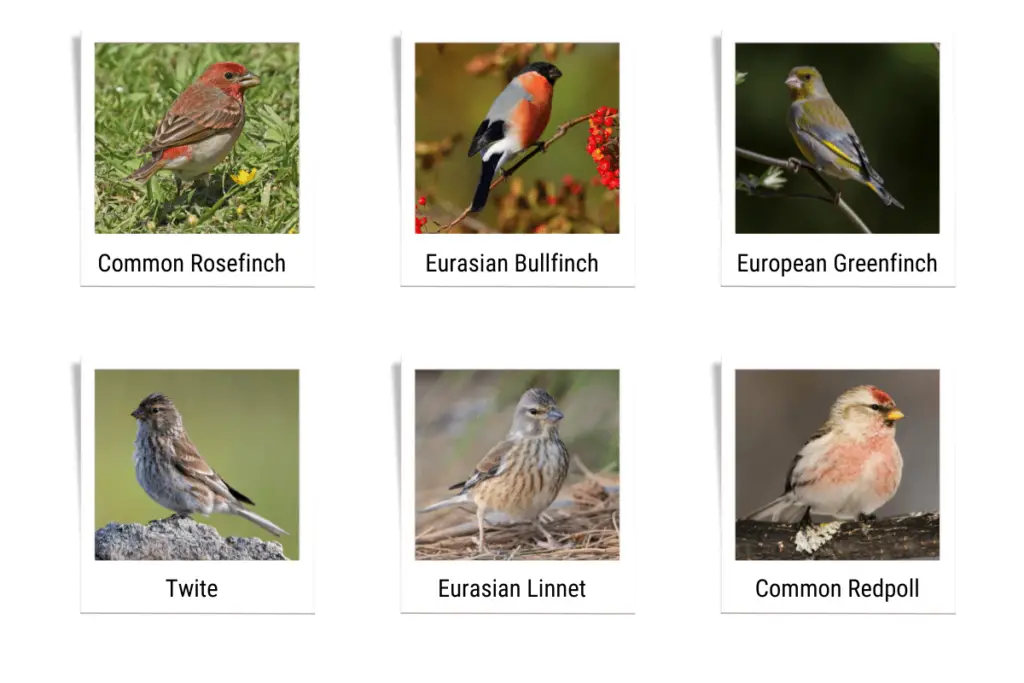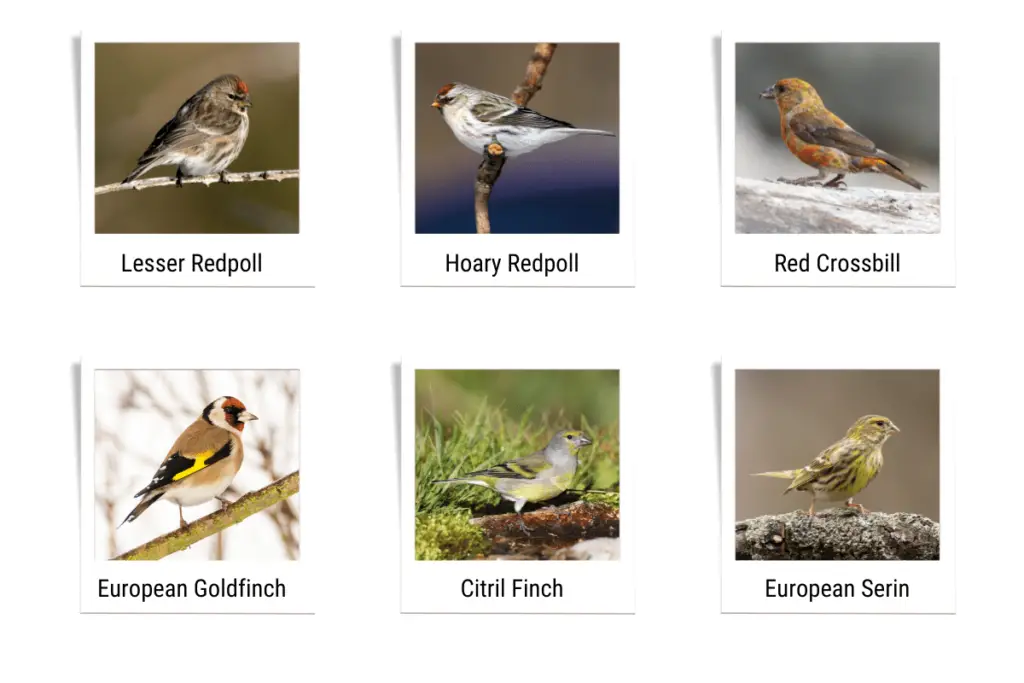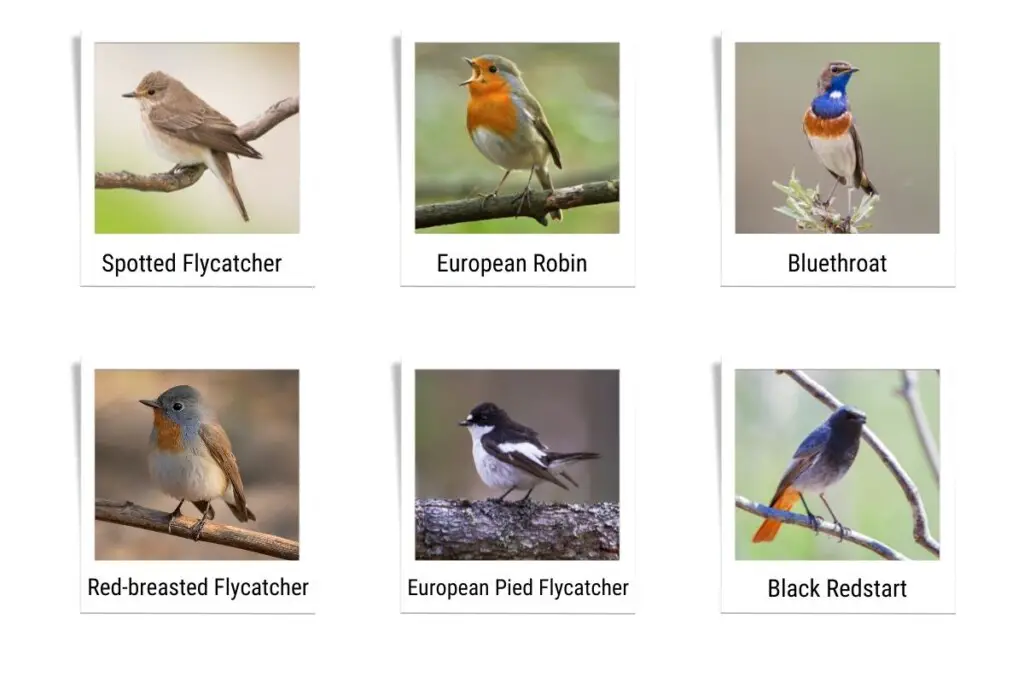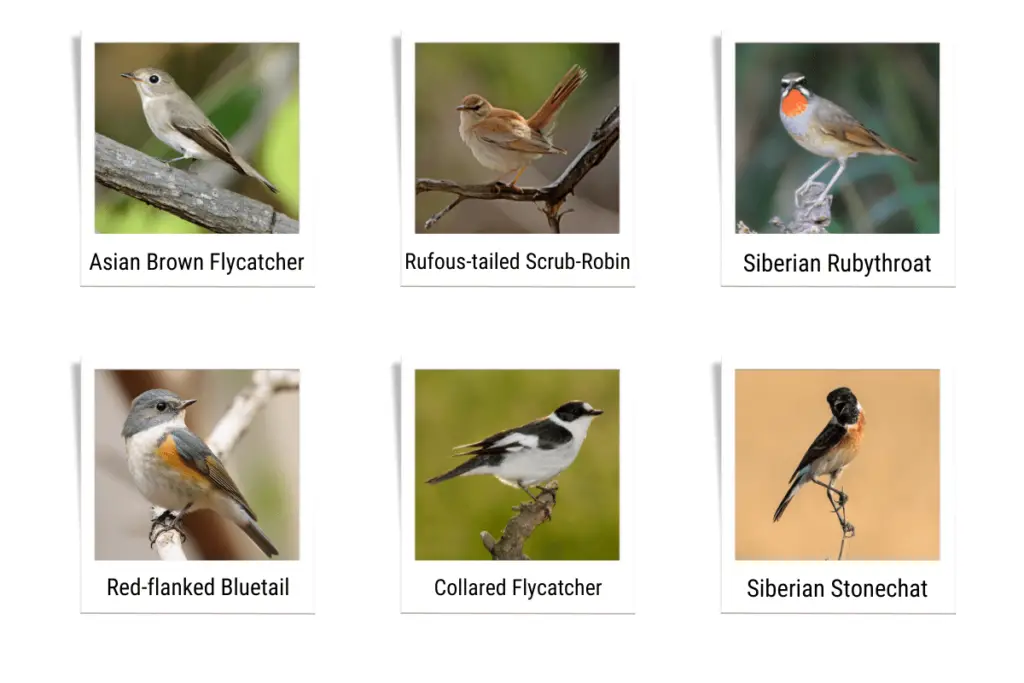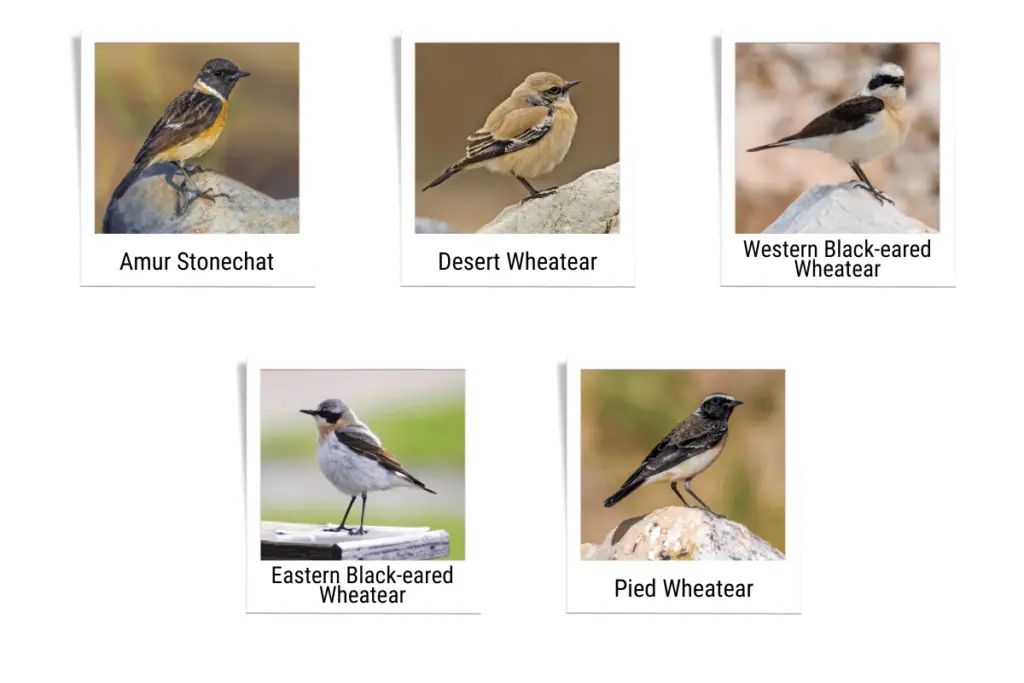The United Kingdom is home to some very cute birds, some common and some not so common. In this article, you will meet 11 types of small birds found in the UK and learn to identify them. From the tiniest birds in Europe to the famous cream-pinching Blue Tits they are all little and amazing.
All the small British birds in this post are 15cm in length or less hence there may be some that you consider small that didn’t make the cut. You may find those birds in other posts here on the Birdwatch World blog. Look for links to other articles scattered throughout this one…
Check out my top 4 recommendations for UK bird field guides on Amazon at this link.
1. Tits
If you have a garden feeder you have most likely seen a Tit before as they are regular visitors to feeders.
Tits range in size from 11.5 cm to around 14cm (4.5-5.5 in.) in length. They are very social birds and often flock together in mixed groups.
6 species of Tit breed in the United Kingdom. The most recognizable of them is the Blue Tit:
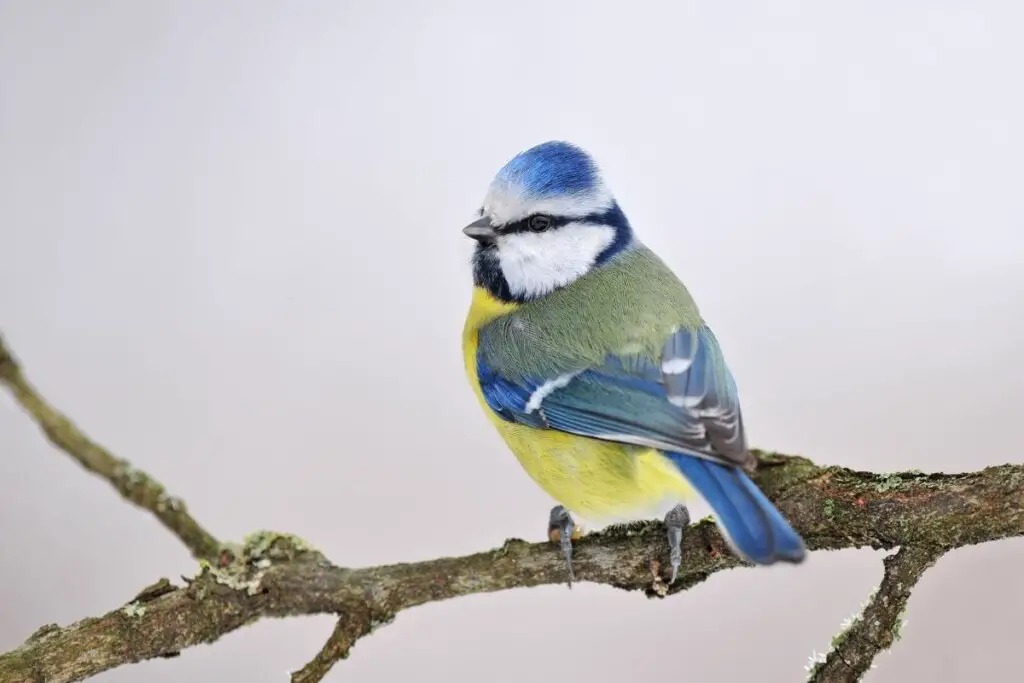
Blue Tits earned a bad reputation for themselves back in 1921 in Swathling, England when they began pilfering cream from the top of people’s milk bottles. In those days, milk was delivered to your doorstep in glass bottles.
The Tits had figured out how to remove the caps on the bottles to get at the cream that had floated to the top of the milk. This technique soon spread among Tits all across the UK.
The other Tits that breed in the UK are seen below:
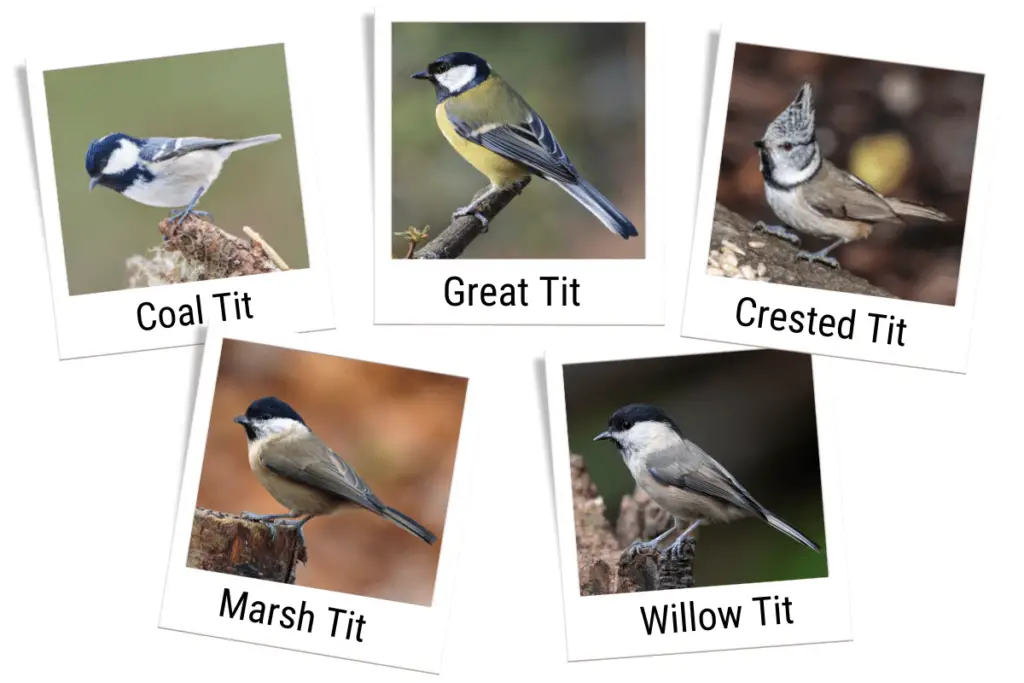
There is also the Long-Tailed Tit which only breeds in England on rare occasions. They are around 14 cm (5.5 in.) in length with long tails.
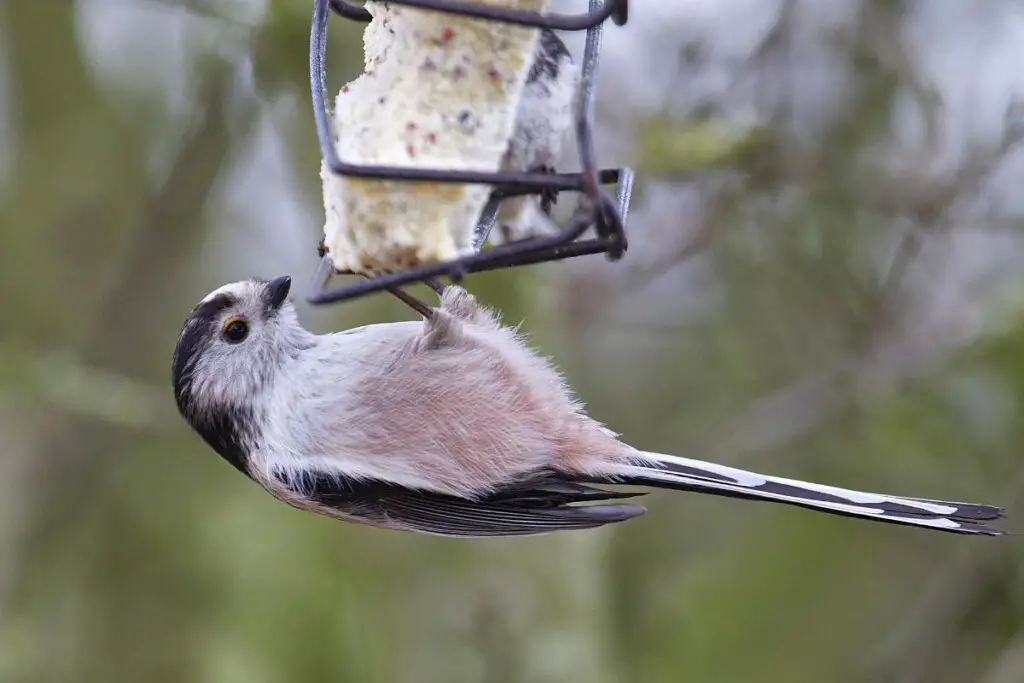
Long-tailed Tits are social birds that move in flocks of mostly around 20 birds. They are very noisy and excitable birds. Listen to their calls below:
Another Tit you might be lucky enough to see in the United Kingdom is the Eurasian Penduline Tit. Around 10-11 cm (3.9-4.3 in.) long, these little migrants will sometimes visit England during the winter months.
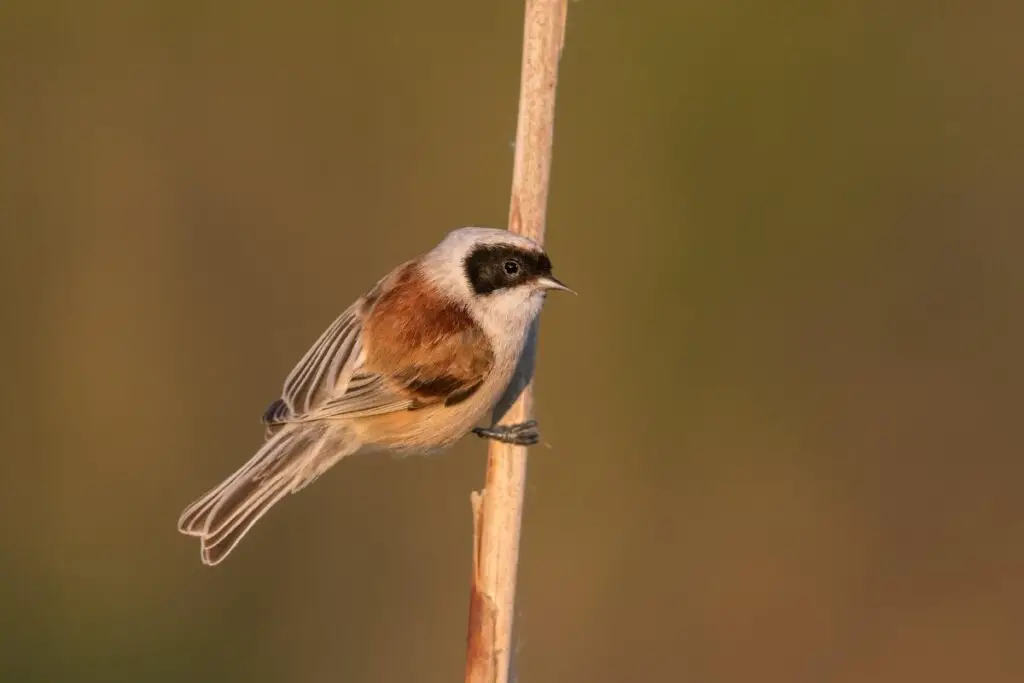
2. Eurasian Wrens
Eurasian Wrens are cute little birds around 9-10 cm (3.5-3.9 in.) in length with brown feathers and stubby tails.
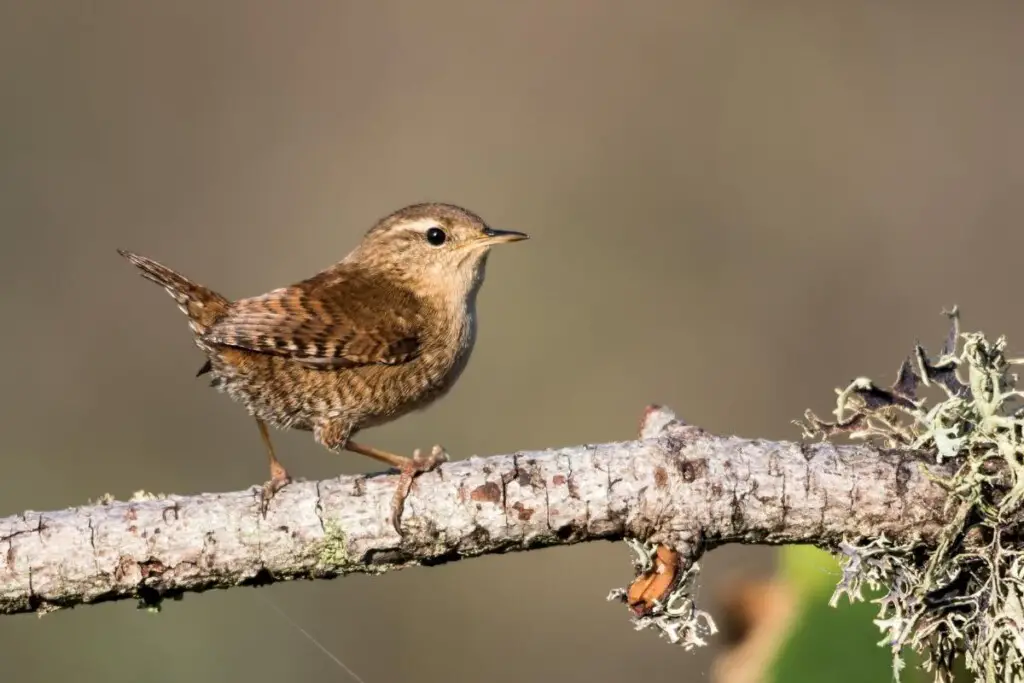
These are the most commonly occurring birds that breed in the UK.
You can find them feeding on insects and spiders in woodland, farmland, moorland, and heathland. You might also spot them on islands though they are less abundant in Scotland and northern England.
Discover the best time for birdwatching in the UK here in this post from Birdwatch World.
3. Warblers
There are 53 different Warblers that can be found in the United Kingdom and they range in size from 10 to 15 cm (3.9-5.9 in.) in length.
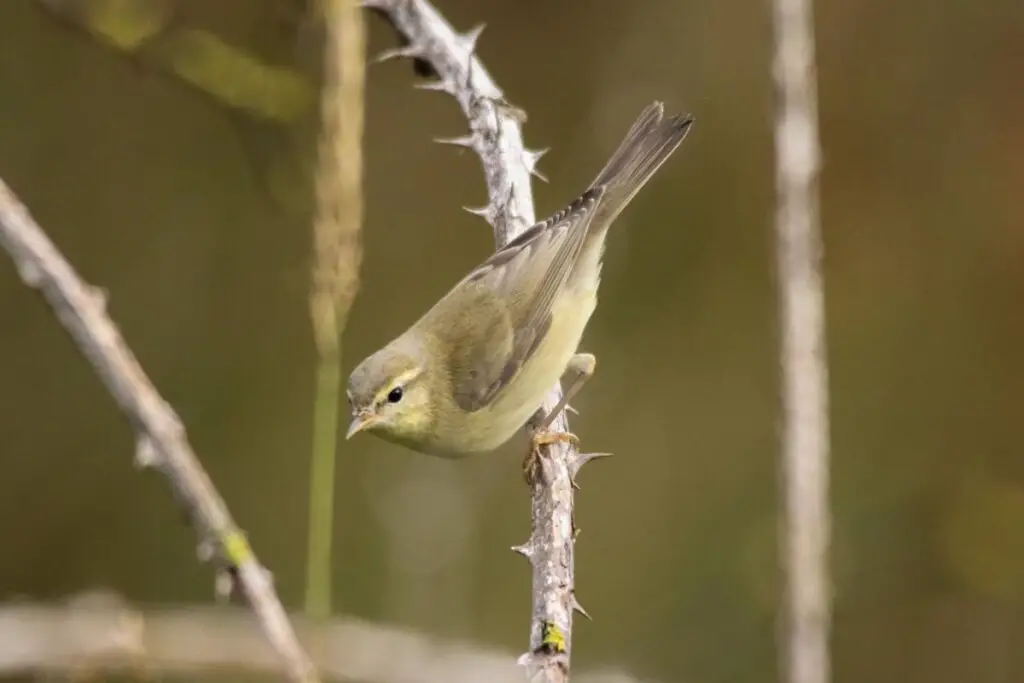
Warblers are classified into 5 different groups:
- Leaf Warblers
- Reed Warblers
- Bush Warblers
- Grasshopper Warblers
- Old World Warblers (also called Sylviid Warblers)
Most of these birds are migrants but some do remain in the UK year-round. Some are only found on the Shetland Islands.
4. Finches
25 different species of Finch occur in the UK. Here I’m only going to deal with those that fit within a 15 cm length limit. Some of them go over it but mostly, these birds range from 10.5 to 20cm (4.1-7.9 in.) long.
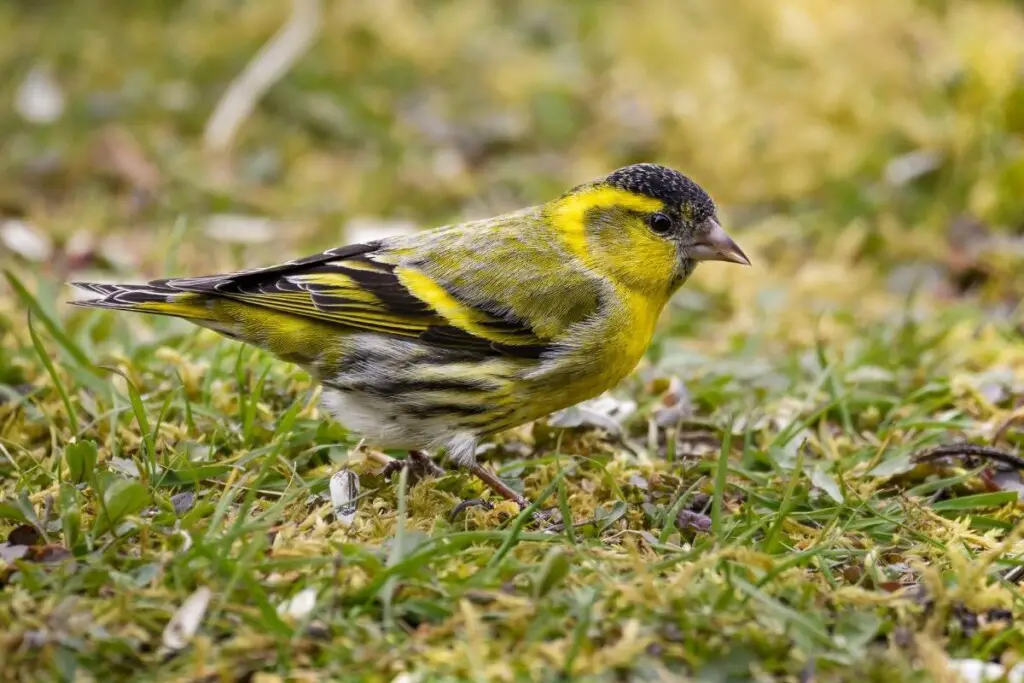
The European Siskin shown above is a regular visitor to backyard feeders in the UK. These birds are most numerous in Scotland and Wales.
Listen to the call of the European Siskin below:
Below you can see more types of Finches that occur across the United Kingdom:
Some Finches will feed while perched on or hanging from trees or bushes. Others are ground feeders that jump around picking up seeds.
Are bird watchers weird? Find out in this post from Birdwatch World.
5. Flycatchers and Chats
There are 21 species under 15 cm in this group, ranging from 12 cm (4.7 in.) to a maximum length of 16 cm (6.3 in.).
Included in this group are Robins, Flycatchers, Stonechats, Redstarts, Wheatears, and more.
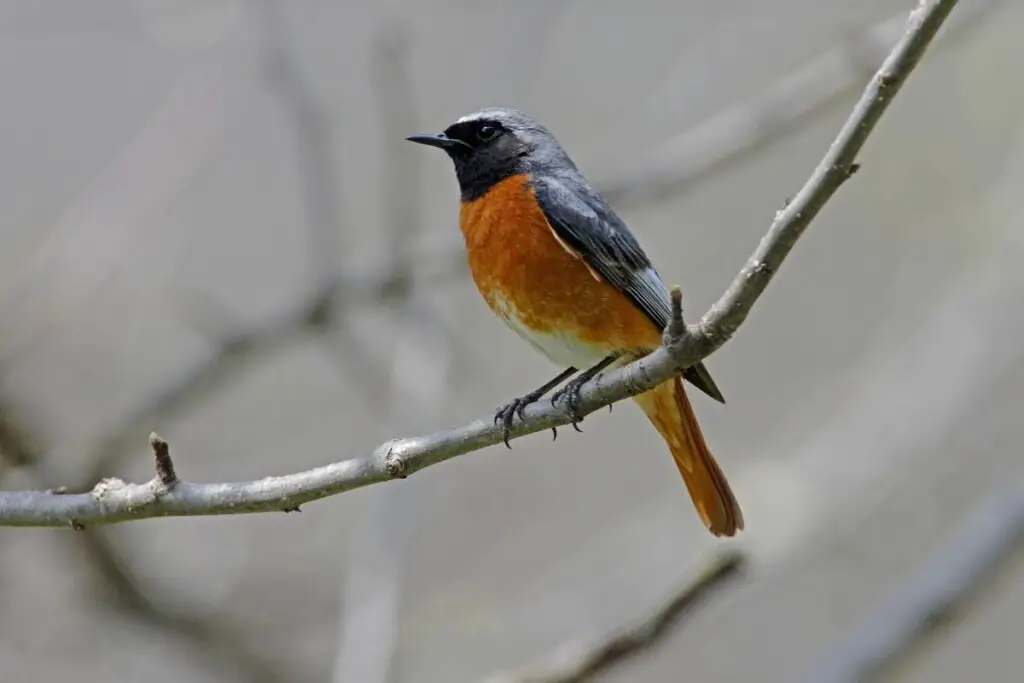
Some other small British birds from this group can be seen below:
The birds in the pictures that follow are those from this family not so commonly seen. Some of them such as the Siberian Stonechat has only been seen in scattered places along the coast of England, Scotland, and Ireland.
6. Nuthatch
There is only one solitary bird in the group of Nuthatches found in the UK – the Eurasian Nuthatch.
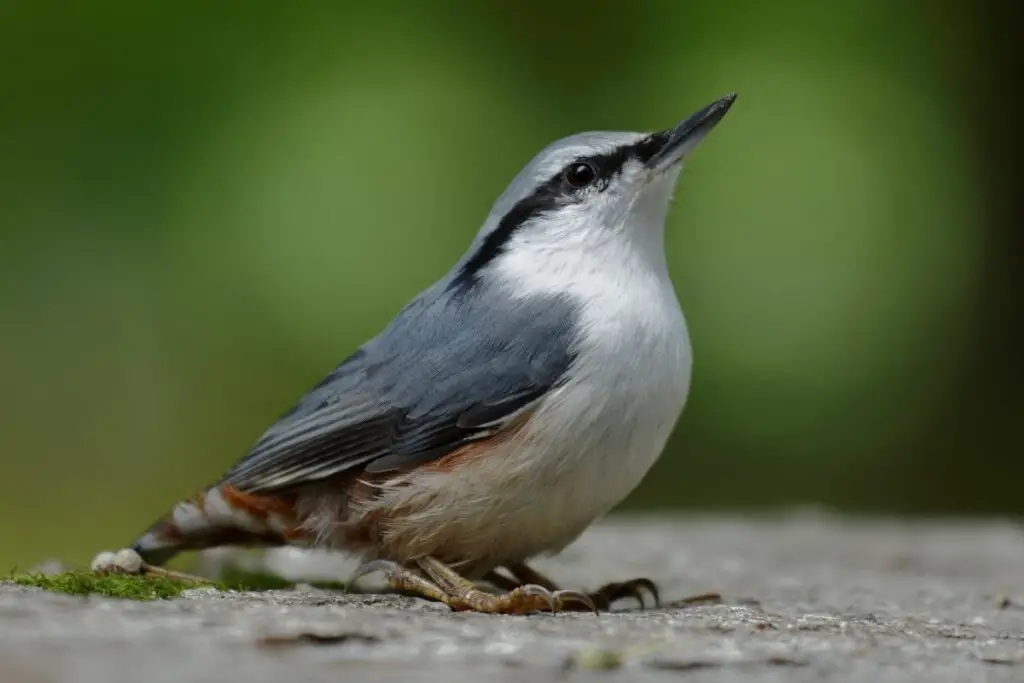
Eurasian Nuthatches are UK residents, rarely moving far away from the woods where they hatch. They breed in England, Wales, and Scotland.
Nuthatches are in fact the only UK bird that can climb down trees headfirst. Those powerful claws provide enough grip for them to do this with ease.
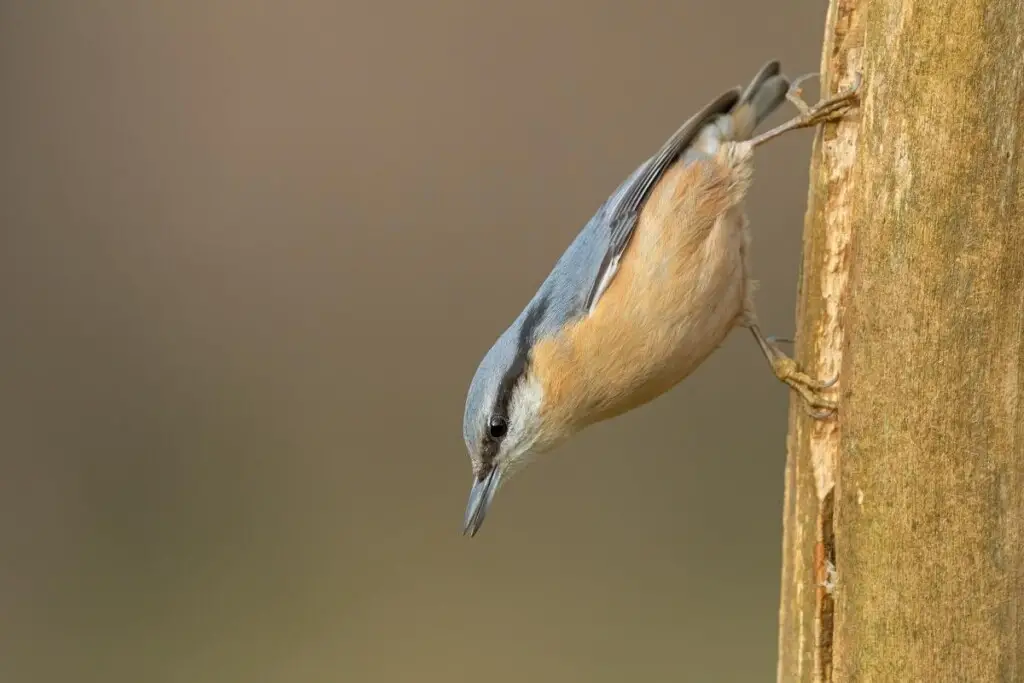
Listen to the call of the Eurasian Nuthatch below:
7. Sparrows
There are 4 species of Sparrows that can be sighted in the United Kingdom, one of which is a bird that has managed to occupy most of the planet.
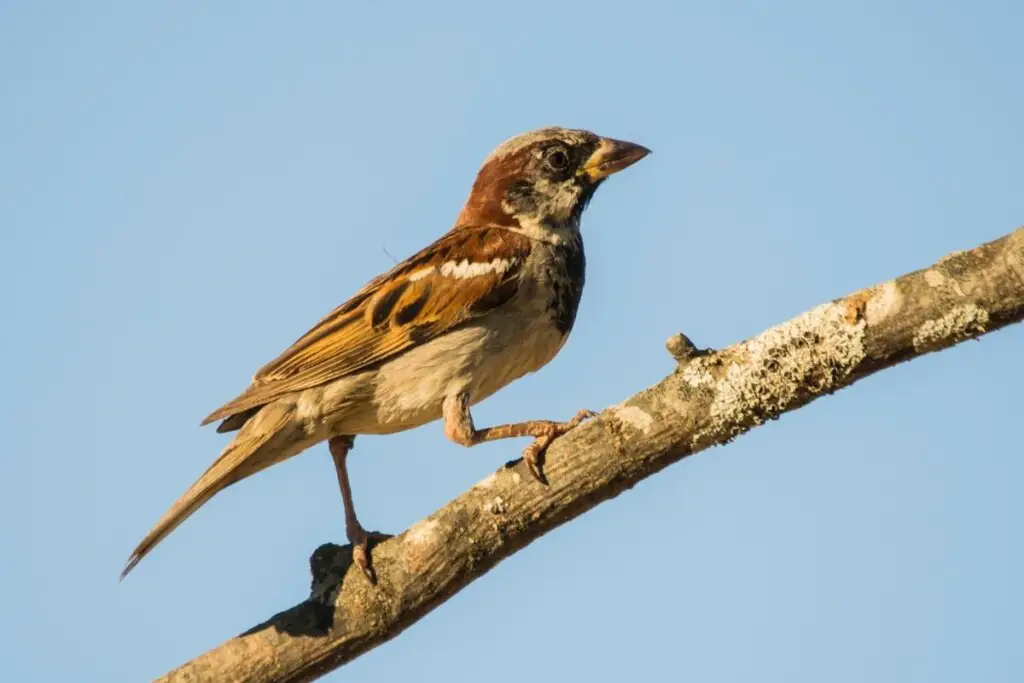
The Sparrows in the UK range from 14 to 17 cm (5.5-6.7 in.) in length. There are two very common species and two may be seen as they migrate.
The House Sparrow is a species that can be seen pretty much anywhere in the world. Their numbers have been speedily declining. According to this article from The Guardian, there are 247 million fewer House Sparrows in Europe than there were in 1980.
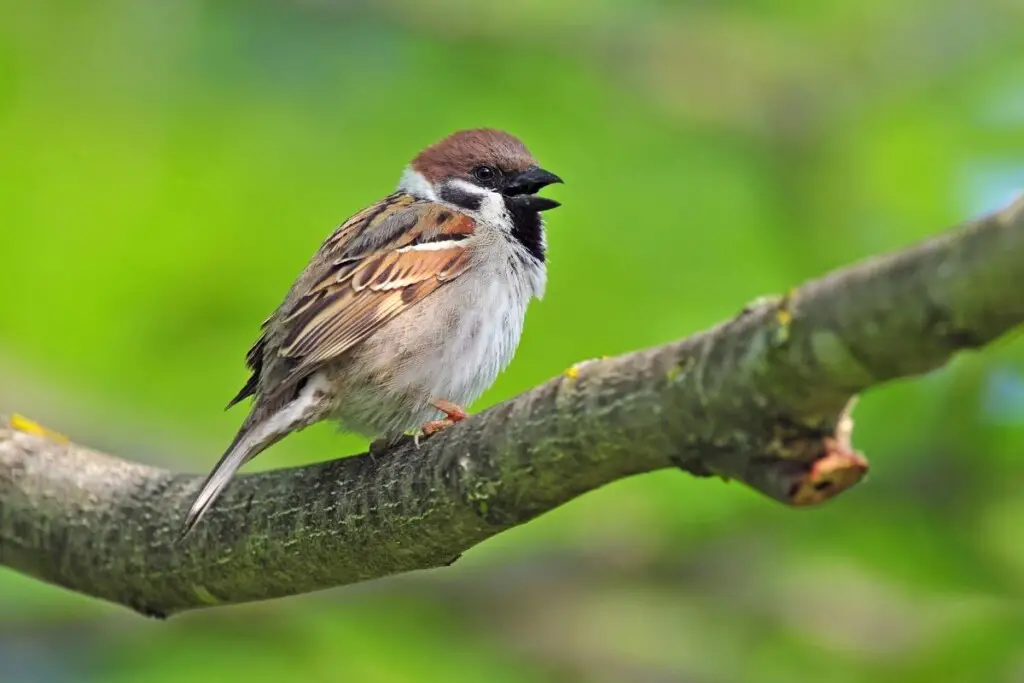
The Eurasian Tree Sparrow is the other common species of Sparrow in the UK. They are smaller than House Sparrows and more active.
The more uncommon Sparrows can be seen below:
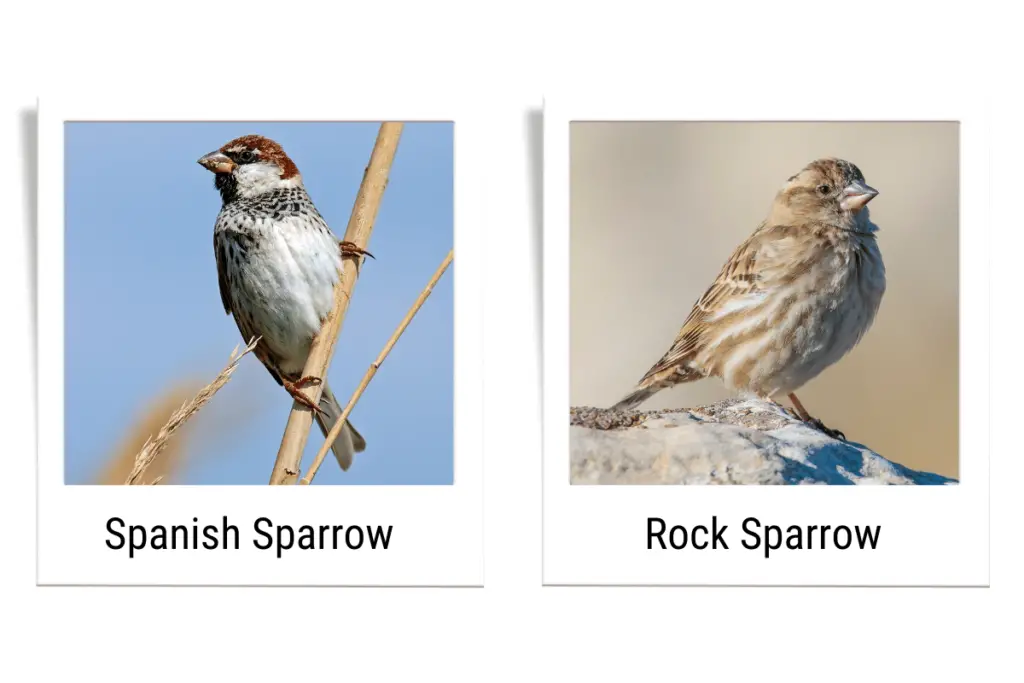
Learn more about what small birds eat in this article from Birdwatch World.
8. Kinglets and Firecrests
There are just two birds in this group and they are the smallest birds in the UK.
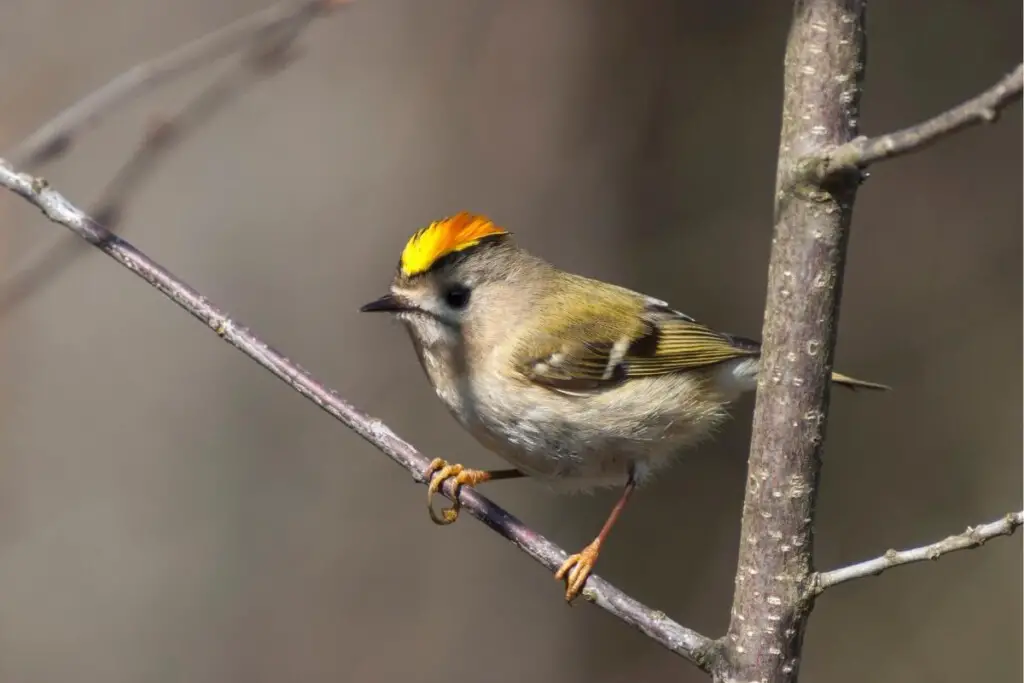
The Goldcrest, clearly named for the stunning gold crest on its head, is the smallest bird in the UK at just 8.5-9.5 cm (3.3-3.7 in.) long.
Goldcrests are very common across all of the UK. They eat aphids, moths, spiders, and other small arthropods. Their tiny beak is ideal for picking insects out from between pine needles.
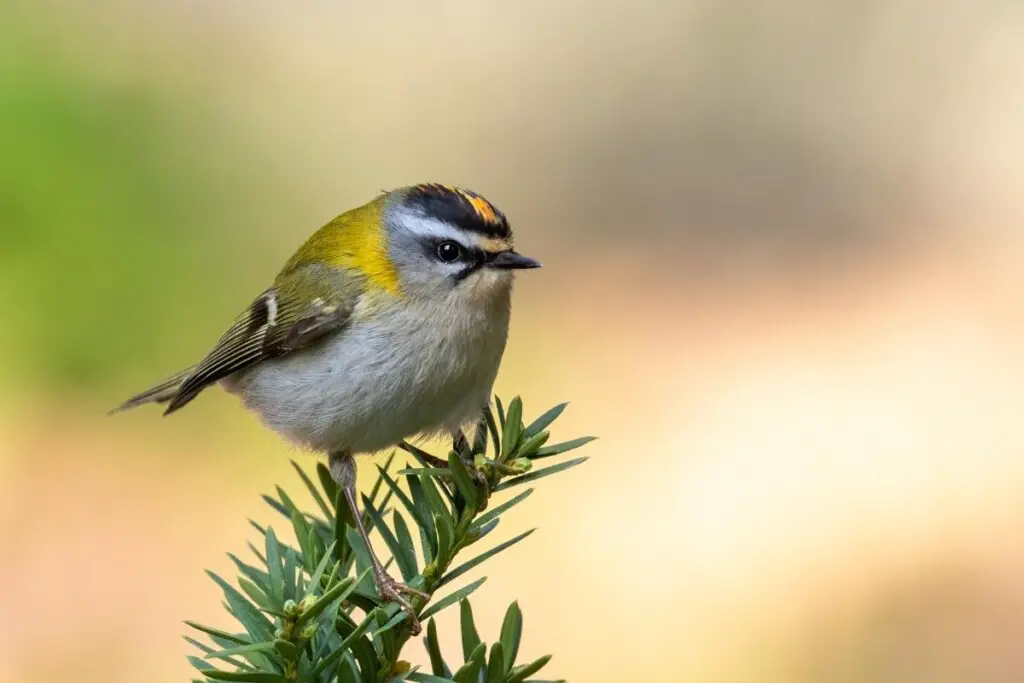
The Common Firecrest is only slightly bigger than the Goldcrest at 9 cm (3.5 in.) in length.
They are similar in plumage to the Goldcrest but with a less prominent yellow stripe on their heads and black and white striping on their faces.
A small number of Firecrests breed in the UK, mostly in England’s southeast.
Listen to the calls of these cute little birds below:
Goldcrest
Firecrest
9. Accentors
I put all three Accentors that can be found in the UK in the article, even though one of them, the Alpine Accentor is 15-19 cm (5.9-7.5 in.) long. It only just scraped in.
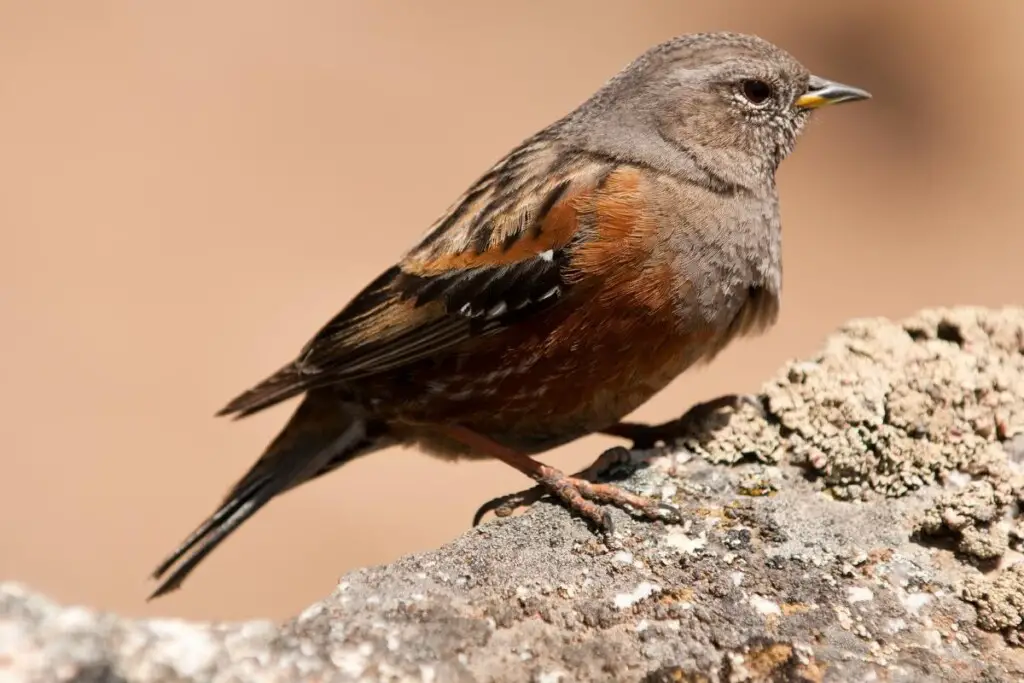
There are currently 38 observations of the Alpine Accentor in the UK on eBird.org, the worldwide platform for the collection of data on bird sightings.
The other two are the Siberian Accentor which is 13-15 cm (5.1-5.9 in.), and the Dunnock which measures around 14.5 cm (5.7 in.) in length.
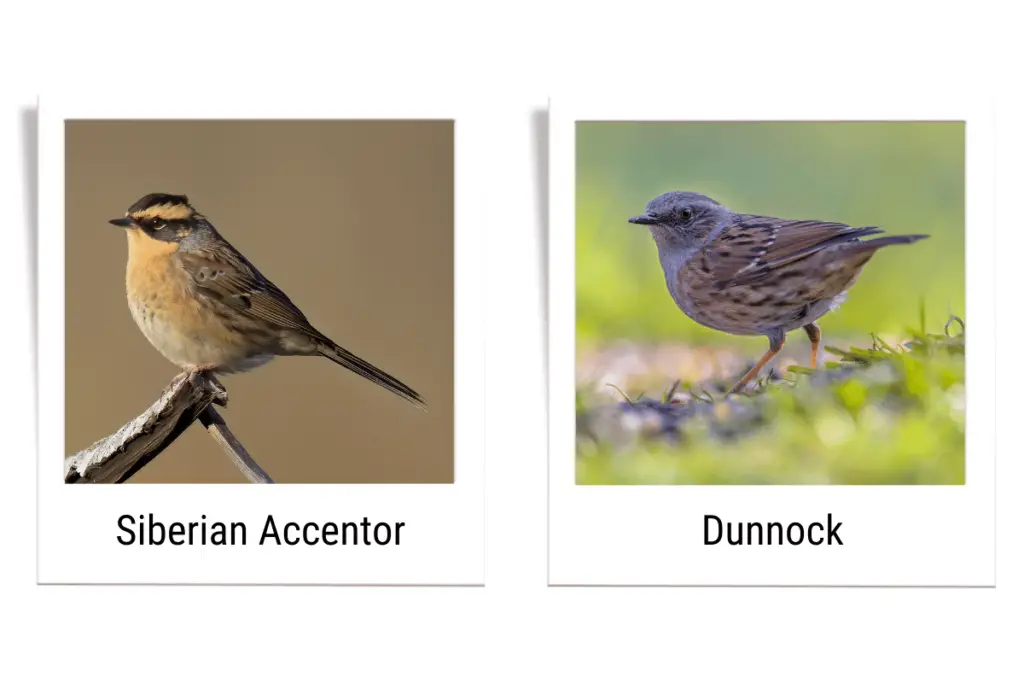
The Siberian Accentor has been sighted 43 times and photographed 48 times on eBird.org.
The Dunnock is a bird that is regularly seen all across the UK. They will stay close to cover, often seen creeping along the edges of flower beds.
10. Swallows and Martins
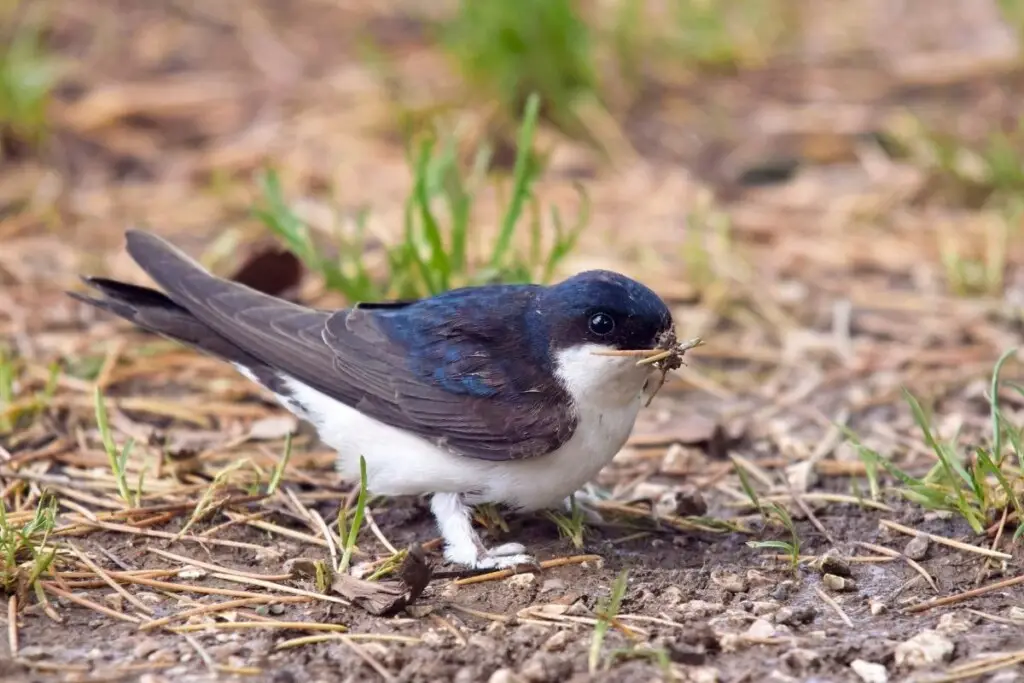
Swallows and Martins are common areal specialists in many parts of the world, catching insects on the wing with skills rivaling the best stunt pilots.
The birds we’re including here are between 12 and 15 cm (4.7-5.9 in.) in length.
The two most common UK birds in this category are the Common House-Martin (seen above) and the Sand Martin (below).
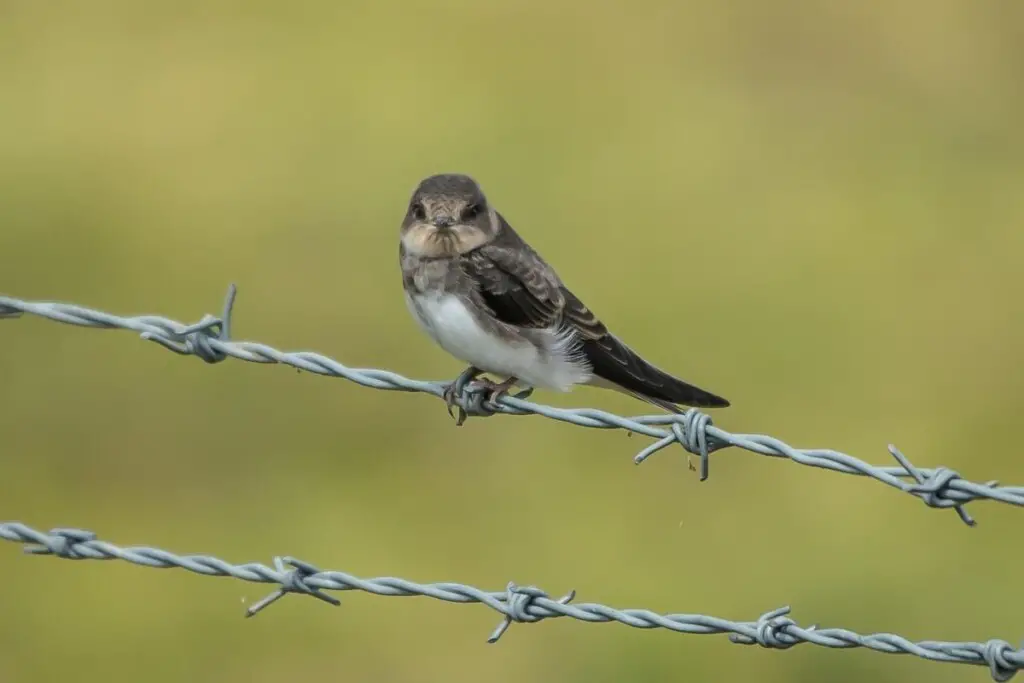
There are three other birds that have been spotted in the United Kingdom on rare occasions; they are pictured below:
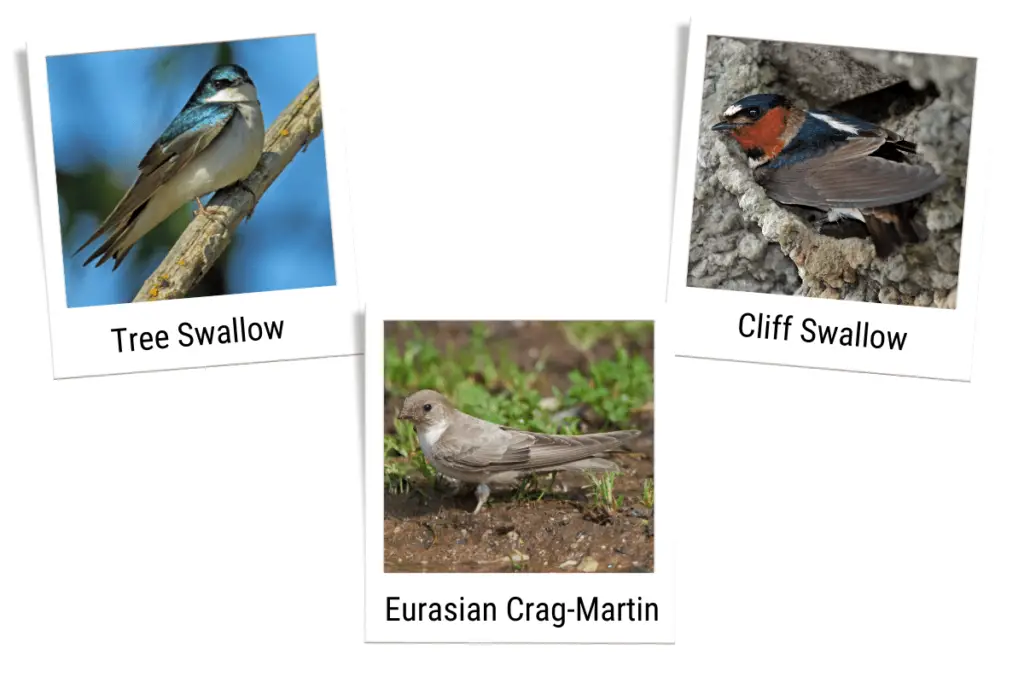
Tree Swallows are only ever reported on the Isles of Scilly in Cornwall and even then, there are only 5 reported observations on eBird.org. It is likely these birds crossed the Atlantic and ended up in the Isles after wintering in Africa or elsewhere in Europe.
Eurasian Crag-martins prefer mountains and coastal cliffs. They have been recorded at Undercliffe and Kingsdown beach, Kent, and also strangely enough at the Chesterfield Parish Church in Derbyshire.
Cliff Swallows have been seen in Suffolk and in the Isles of Scilly, among other places.
11. Treecreepers
Our last two types of small birds that can be found in the UK are Treecreepers. Both species are the same size at around 12.5 cm (4.9 in.) long.
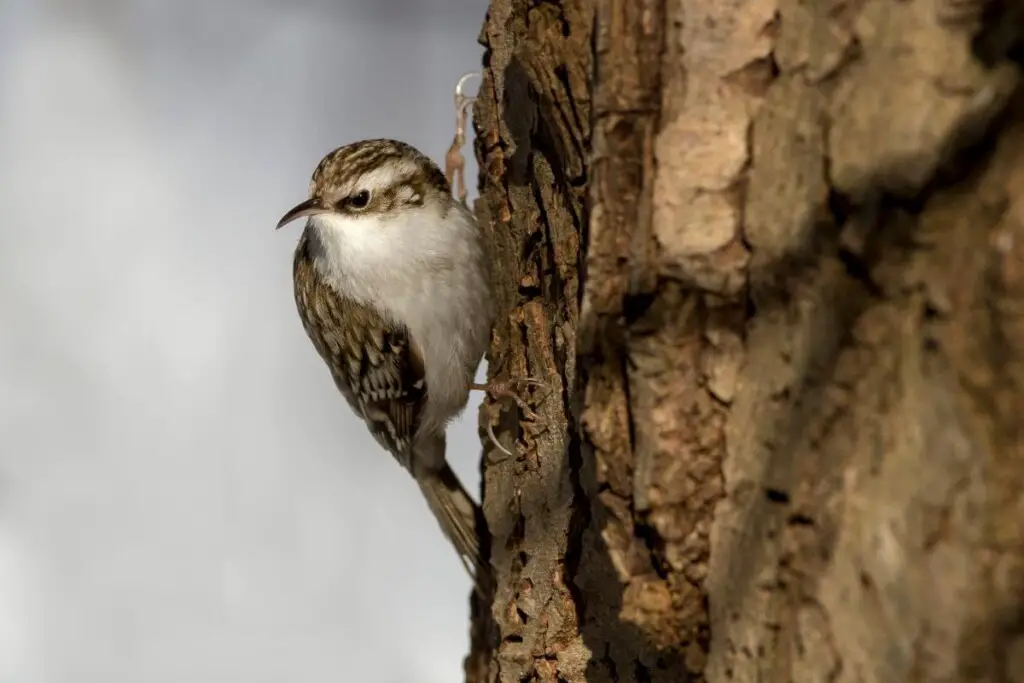
As their name suggests, Treecreepers “creep” up the trunks of trees, collecting insects, spiders, and sometimes seeds.
The Eurasian Treecreeper (pictured above) is very common in forests and woodland. Generally, they favor older spruce as they need established trees with lots of cracks and crevices for spiders and insects to hide in.
Listen to the melodious call of the Eurasian Treecreeper below:
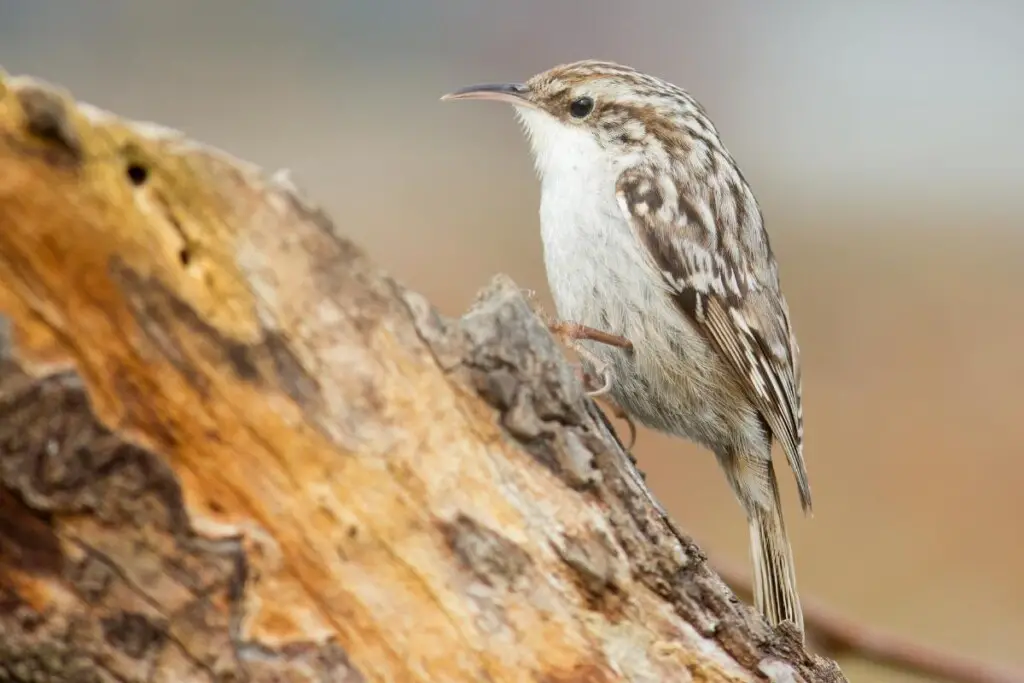
The Short-toed Treecreeper (above) eats insect larvae and pupae, as well as spiders and some seeds.
They can be found in mixed and deciduous woodlands, especially Oak.
Hear the call of the Short-toed Treecreeper below:
References
- Bird distribution, habitat, and diet information – birdsoftheworld.org
- Additional Bird species information – rspb.org.uk
- Nuthatch – The Wildlife Trusts
- Tree Swallow in Scilly: new to the Western Palearctic
- Bird sighting records – eBird.org

